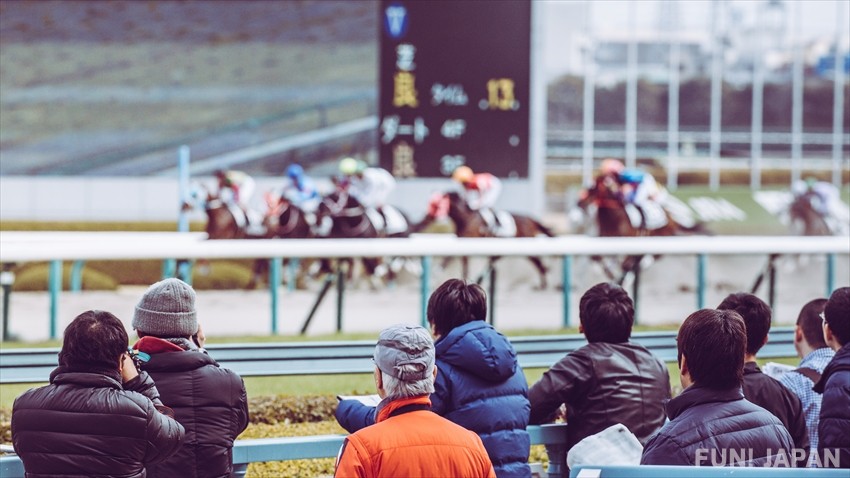
One of Japan’s four legal gambling sports, known as ‘public sports competitions’, Keiba, or Horse Racing, has a dedicated following in Japan. While flat racing is the most common, there is also jump racing and the unusual Draft Racing, also known as Ban’ei racing, which involves the jockey riding in a sled pulled by the horse. Whether you’re a keen gambler looking for new territory or enjoy a simple flutter at the races once in a while, the world of horse racing in Japan is worth getting to know.
The History of Horse Racing in Japan
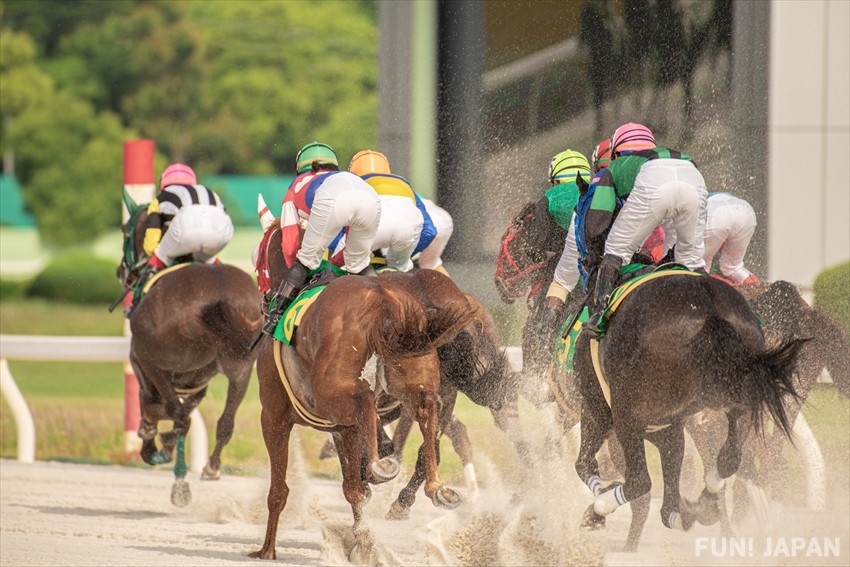
While horses have long been a part of Japanese life and cultural traditions, the sport of horse racing is a relatively new addition. The first recognized competitive race took place in 1862, led by British residents in Yokohama. As the sport grew in popularity, the Negishi Racecourse was built a few years later, close to the foreign residence area of Yamate, also known as the Bluff. An increasing number of Japanese locals became interested and the Emperor of Japan attended frequently, with the Japan Racing Association formed in 1954. It wasn’t until 1981 that the country’s first official cup was started, with the prestigious Japan Cup first held in Tokyo’s Fuchu Racecourse. The race is still held on the final Sunday of November at the course, with the prize fund totaling 476 million yen.
Understanding Gambling in Japan
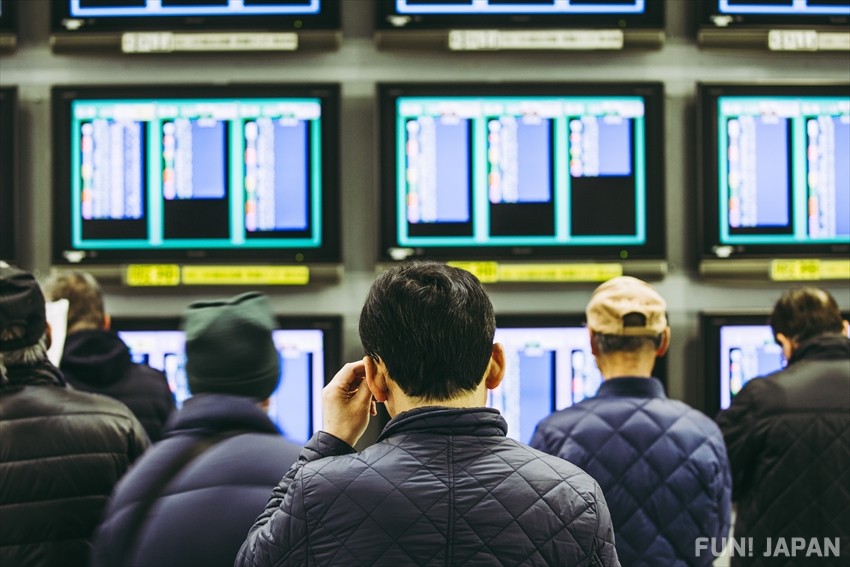
Japan has a tightly controlled gambling scene, with four legally permitted ‘public competitions’ called Koei Kyogi. Along with Keiba (Horse Racing), this includes Autoracing (motorbike racing), Keihin (bike racing) and Kyotei (powerboat racing). Soccer also has some legalized betting options, with games like Pachinko offering a non-direct form of gambling. Read more about the unusual ways of gambling in Japan in our full article [link].
Why Horse Racing is so Popular in Japan

While gambling fans are limited to four sports and there’s an almost guaranteed audience, there are other reasons horse racing is so popular in Japan. The incredible amount of money involved is a leading factor, with prizes in the millions of yen available and plenty of races to choose from. Placing over two billion yen’s worth of bets in a year alone, horse-racing fans in Japan are certainly dedicated. While previously only domestic races were approved for bets, in 2015 foreign race bets were permitted, opening up a new world of choices for the sport’s followers.
However, it isn’t just dedicated gamblers who enjoy horseracing in Japan. At many stadium events, you’ll find families and plenty of keen children. Horses and jockeys have a great appeal and the inclusion of an animal over a machine is a much simpler and more honest sport in the opinion of many fans. Japan has a long history of working with, battling alongside and honoring horses in religious ceremonies, so their role in the sport is respected alongside that of the jockey. Attending races is a popular social event, with time spent outdoors, small bets made and many events featuring activities like fireworks too.
The Top Horse Racing Events in Japan
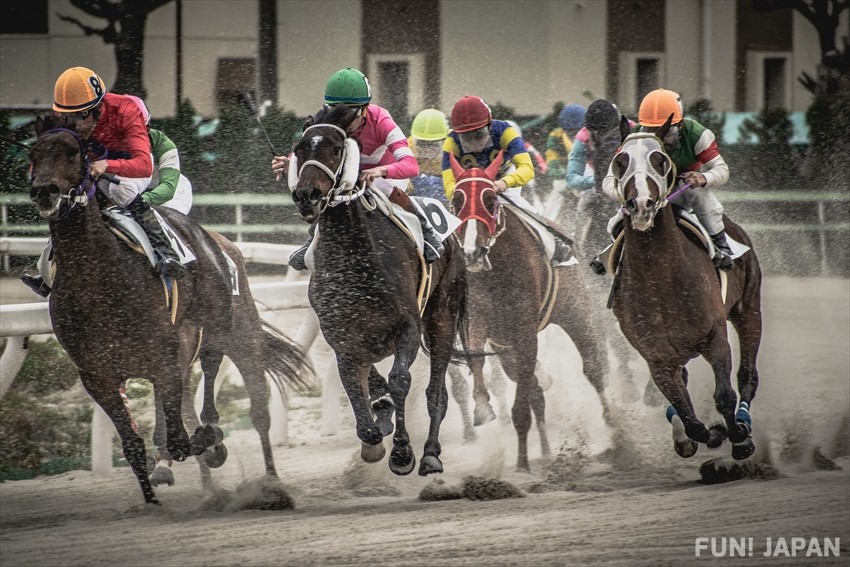
Of over 22,000 aces held each year in Japan, some are more well-known and nationally watched than others. Large prize funds, dedicated television slots and two dedicated associations means it is a well-organized and impressive scene. The National Association of Racing (NAR) manage Chihou Keiba (local races) while the Japan Racing Association (JRA) manage Chuo Keiba (national races).
If a horse is known to have won the triple crown, it means they have won the Satsuki Sho at Nakayama Racebourse in Funabashi, the Tokyo Yushun at Tokyo Racecourse in Fuchu and the Kikuka Sho at Kyoto Racecourse.
The Japan Cup
Held on the final Sunday of November each year, the Japan Cup is one of the biggest races in the country. The prizes total over 500 million yen and spectators have been known to place bets adding up to over 19 billion on the event in total. Not only popular in japan, the race is listed against the Melbourne Cup, the Breeder’s Cup and the Prix de L’arc de Triomphe in global race standards.
The Emperor’s Award or the Tenno Sho
The Tenno Sho is held twice a year - once in spring in Kyoto and then in Autumn in Tokyo. The latter forms the first race of what is known as the Autumn Triple Crown, followed by the Japan Cup and the Arima Kinen. The Tenno Sho is a domestic and international Grade 1 Race and attracts some of the best names worldwide, with a race distance of 3,200m, with world records often set and held in Japan.
Japan’s All-Star Races: The Arima and Takarazuka Kinen
Held at Nakayama Racecourse in Chiba, the Arima Kinen is one of Japan’s most popular races and is also the most heavily betted race. While only Japanese-bred horses were allowed to compete until 1999, the JRA approved the entry of foreign horses, but on the condition they had won the Japan Cup that year.
The Takarazuka Kinen is held in Hyogo at the Hanshin Racecourse with a distance of 2,200m. It is held in late June and run on turf, with entrants chosen using a voting system for fans (as at Arima), with the remainder are chosen based on the prize money available.
Other popular races take place across the country and throughout the year including The February Stakes, the Osaka Hai (March), the Tokyo Yushun (May), The Sprinter’s Stakes (September), the Shuka Sho (October), The Mile Championship (November) and the Tokyo Daishoten (December). There are also a series of races which are designated as preliminaries for the Kentucky Derby: the Cattleya Sho (November), the Zen-Nippon Nisai Yushun (December) the Hyacinth Stakes (January) and the Fukuryu Stakes (February).
How to Enjoy Horse Racing in Japan
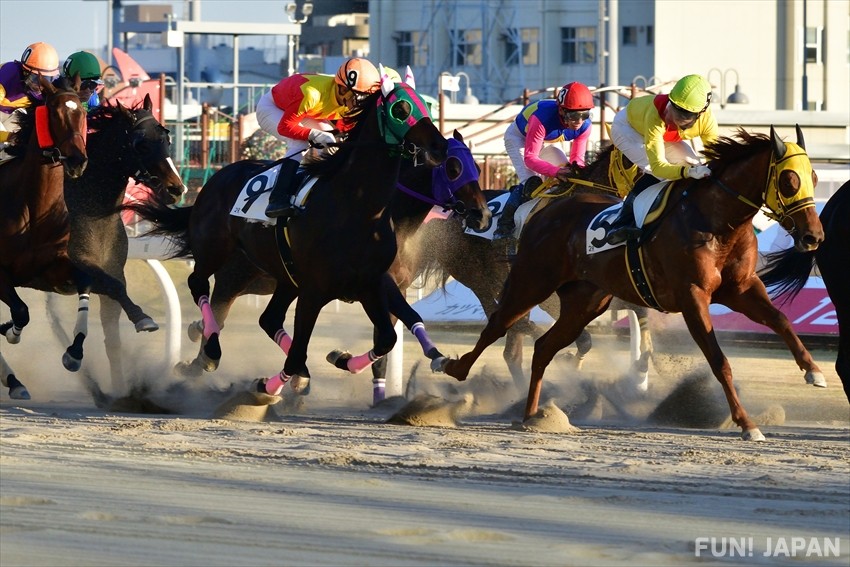
While betting in a foreign language on a new or even a familiar sport may seem intimidating, it is actually surprisingly simple. The JRA provides an extremely detailed booklet advising how to bet using their approved cards, including detailed translations of all fields. Each betting card has options for first, second and third horses along with the chosen bet, the racecourse, race number and amount placed on the bet.
Betting Types
When placing your bets you can choose from a selection of outcomes, including selecting one, two or three horses.
- Win: Choosing the winner of the race
- Place: Choosing one horse to either win, place second or place third.
- Quinella: Choosing two horses to place first and second in any order
- Quinella Place: Choosing two horses to place first and second, first and third or second and third - all in any order.
- Exacta: Choosing two horses to place first and second in correct order.
- Trio: Choosing three horses to place first, second and third in any order.
- Trifecta: Choosing three horses to place first, second and third in correct order.
There are a wide variety of specific betting cards and examples are given for each in the booklet, so we suggest comparing your card to be certain of no mistakes.
Placing a Bet using a Betting Card
Betting cards can be submitted using vending machines at many major racecourses. This simplifies the process as there are language options available too. Ensure that cards are clearly marked so they can be read correctly by the machine.
- Insert Cash for your bet
- Insert completed and checked betting scards
- Confirm details as shown on the screen
- Retrieve the approved betting card and any change due.
Collecting Winnings
This can also be done using he vending machines - you simply insert your betting card and the machine will automatically issue your winnings in cash!
Racetracks in Japan and Tokyo
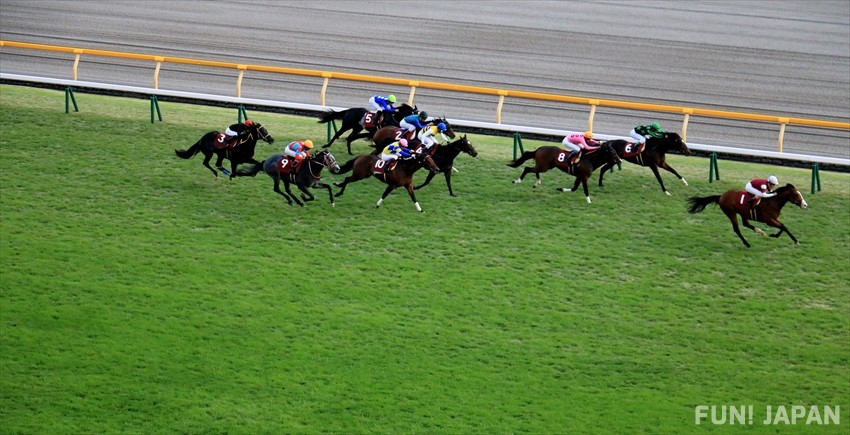
All National Races regulated by the Japan Racing Federation (JRA) are held at ten National racecourses, with Tokyo, Nakayama, Kyoto and Hanshin known as ‘The Big Four’. Tokyo’s major racecourse is surprisingly central and easy to access.
Tokyo Racecourse
The busiest racecourse, Tokyo Racecourse is located in Fuchu city and was built in 1933. It was heavily renovated and reopened in 1997 and is considered the best course in the country.
The Tokyo Racecourse hosts many of the biggest races in Japan:
- The Japan Cup
- The Tokyo Yushun
- The Tenno Shu
- The Yasuda Kinen
- The Yushun Himba
- The February Stakes
- The NHK Mile Cup
- The Victoria Mile
What to Eat at Tokyo Racecourse
Be sure to enjoy the full experience and try the snacks available the racecourse. The Fuji View Stand and the Memorial View stand both have multiple floors of restaurants, with all the traditional dishes you may expect including soba, beef rice bowls and chicken skewers. One of the most popular dishes, however, is a Katsu Curry or a Katsu Sandwich. Katsu is a breaded pork cutlet, but while the name is derived from the English ‘cutlet’ it also sounds similar to the Japanese word meaning ‘to win’, so it is a way to boost your luck after placing a bet.
Spot Information
- Name: Tokyo Racecourse (東京競馬場)
- Address: 1-1 Hiyoshicho, Fuchu, Tokyo
- Access: The stadium is best accessed from Shinjuku using Fuchukeiba Seimonmae Station which has a dedicated walkway to the stadium. The journey from Shinjuku takes just under an hour if you take the semi-express Keio Line to Chofu, swap to the Local line and the change at Higashi Fuchu Station to the Keio Keibajo Line. Alternatively, you can alight at Higashi Fuchu and walk 10 minutes to the racecourse.
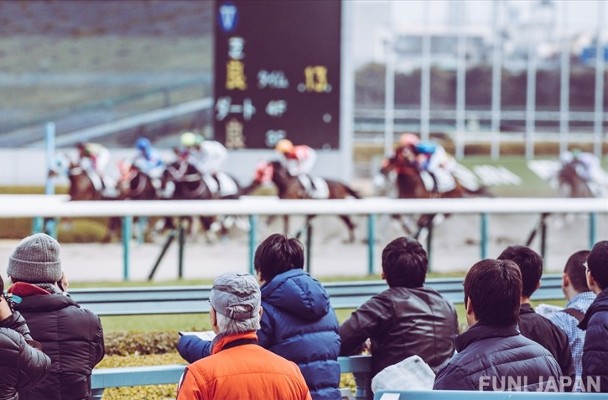
Comments